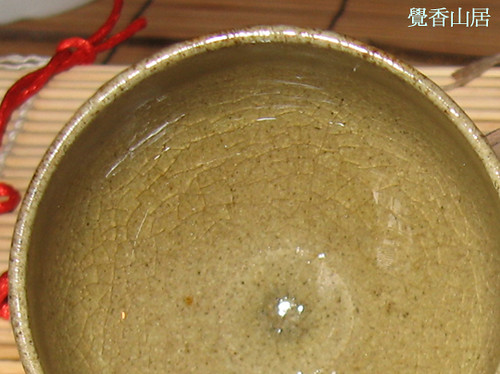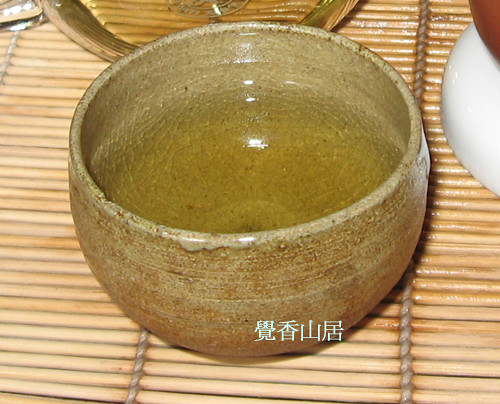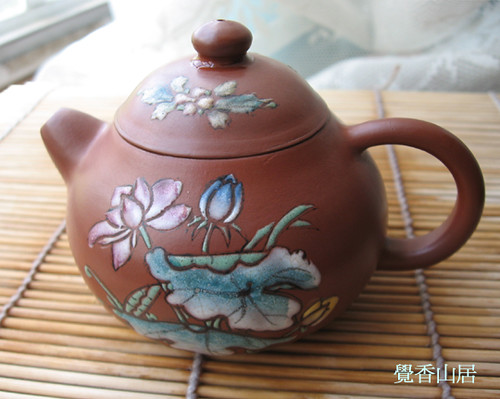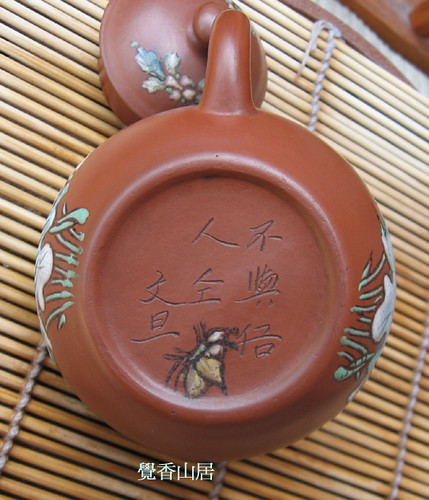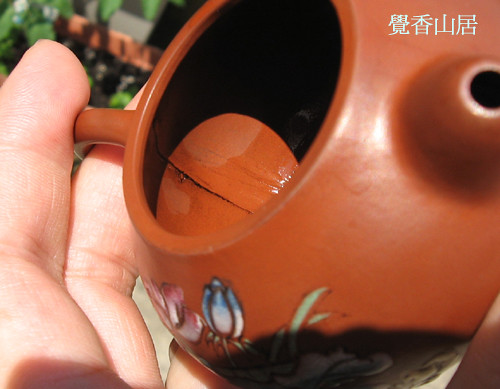Recently I've been indulging myself in some HIGH quality Oolong teas, especially Taiwanese Oolongs, which are all gifts from friends. To name a few, they are 大禹嶺 Da-yu-ling, 梨山 Li-shan, and 金萱 Jin-xuan made by an organic tea farm called
沙里仙 Shalishan in the 玉山 Yu-shan Mountain range, a famous tea production area in Taiwan. These are all typical Taiwanese high mountain oolongs which are lightly roasted. To be qualified as
High Mountain Teas, the tea has to be grown at least 1,200 meters above sea level on a mountain. Da-yu-ling is grown at 2,600 meters above sea level! A high fragrance with a vitality, called 山頭氣
shan tou qi, are appreciated for these teas. These teas are usually enjoyed freshly produced.
In contrast, I've also received two
old or
aged oolongs, processed more or less similiar to the Mainland oolong tradition. The most famous brand is 凍頂烏龍 Dong-ding oolong. I got a can of 17 year-old Dong-ding from Louisa, and a sample of 20 year-old Taiwanese oolong from Lawrence MarshalN.
The three lightly roasted high mountain oolongs were best steeped with my 掇球 Dou-qiu and 小文旦 mini Wen-dan teapots -- these pots are made of 珠泥 Zhu ni, fired on a rather high tempreture and thus acquired a high density and hardness. Especially the mini Wen-dan pot, if you carefully rub the lid on the rim of the pot, you will hear a rather sharp and clear sound similiar to that of chinaware! These features are believed to be suitable to lightly roasted oolongs, because they can lift up the fragrance of the tea during infusion!

-- Steeping Da-yu-ling with the Dou-qiu pot (notice the tightness of the lid which prevents it falling out even when the pot is turned into vertical position!)

-- Steeping Li-shan in the small Wen-dan pot. Spent leaves.
For the traditionally fuller roasted, and especially aged oolongs, it is believed that a slightly lower fired and less density clay teapot will do a better job. With some experiments, I found my new small
水平 shui-pin pot is quite good in handling the two agaed oolongs!

Okay, I guess then what happens to my taste buds is that they are over experienced with too good teas, for a prolonged time, and they have all got used to the good taste in good teas. What this really mean is that, unfortunately, they can no longer bear any low quality teas! How I discover this? Yesterday, I checked my storage of teas, and decided to try something left over there for a few months. It was also a lightly roasted oolong, a market available brand from China. The tea is whole-leaved but
conveniently parked in small sized, vacuumized aluminum bags, each bag with the amount good for one pot. I tried it with my new loveable
mini Wen-dan pot, and applied the same mehtod as I've been making teas recently -- but the result was a little terrifying! I found in myself an aversion to the tea -- because it tasted really
bad, I mean it.
I could even notice a smell of pollution out of the leaves, the kind of smell of tea production involved with using synthetic fertilizer I believe, even though it was subtle. The leaves also looked thin, smaller, and fragile. Compared with the strong and thick veined high mountain stuff I've drinking these days, it's clear to me that this is not a good tea. But, I still remember a few months ago, when I first received this tea and tried it, it tasted
good enough to me!
Now, my taste to good quality oolongs becomes irreversible! Just like once you started using a broad band internet service, you can't go back to the phone jack anymore!


